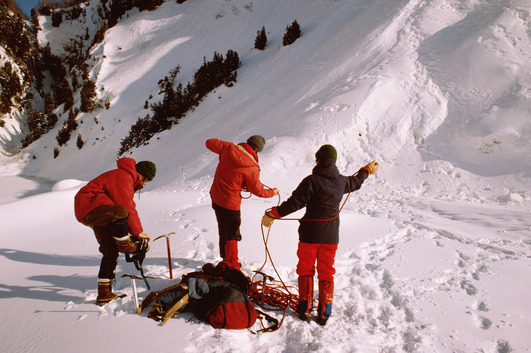Battling the Bite: A Comprehensive Guide to Jackets and Warm Wear for Cold Weather Survival
Winter’s icy grip can flip even the so much ardent outside enthusiast into a shivering recluse. But with the right apparatus, conquering the cold turns into a interesting experience, now not a dreaded chore. This complete guide dives deep into the world of jackets and hot put on, equipping you with the know-how to choose the suitable apparel to your winter escapades, from informal strolls to extreme expeditions.
Understanding the Cold: Layering for Success
Before diving into precise gear, knowing the principles of cold weather dressing is essential. The key lies in layering: creating a system of insulation that traps warmth at the same time as allowing for breathability and moisture management. The three key layers are:
- Base Layer: This first layer sits closest to the pores and skin, wicking away sweat and retaining you dry. Synthetic materials like polyester or merino wool are ideal for their moisture-wicking properties.
- Mid Layer: Providing the bulk of the insulation, mid layers can range from fleece to down jackets, depending on the level of heat required.
- Outer Layer: This outermost shield protects you from wind, rain, and snow. Waterproof and breathable fabric like Gore-Tex or eVent are top contenders.
Choosing the Right Jacket: A Deep Dive into Options
1. Down Jackets: The last in lightweight warmth, down jackets are filled with fluffy feathers, proposing notable insulation-to-weight ratio.
- Pros: Lightweight, packable, especially compressible, incredible heat-to-weight ratio.
- Cons: Can be high-priced, less sturdy than synthetic alternatives, loses its insulating properties while moist.
2. Synthetic Insulation Jackets: These jackets use synthetic fibers like polyester or Primaloft, featuring a more sturdy and moisture-resistant alternative.
- Pros: Moisture-resistant, dries speedy, tougher than down, frequently extra affordable.
- Cons: Less compressible than down, slightly chillier than down consistent with weight.
three. Fleece Jackets: These are warm and snug, ideal for mild temperatures and layering.
- Pros: Soft and relaxed, especially breathable, moisture-wicking, extraordinarily inexpensive.
- Cons: Not waterproof or windproof, less warm than down or manufactured insulation.
4. Shell Jackets: Designed for protection from the factors, shell jackets are light-weight and water-resistant, typically used as an outer layer.
- Pros: Highly waterproof and breathable, durable, compact and packable.
- Cons: Not insulated, calls for layering for heat, may be high priced.
Beyond the Jacket: The Essential Warm Wear Collection
1. Hats: Keeping your head warm is critical for preventing warmth loss.
- Wool: Warm, breathable, and moisture-wicking.
- Fleece: Comfortable and warm, yet now not as breathable as wool.
- Synthetic: Durable, quick-drying, and moisture-wicking.
2. Gloves: Warm hands are vital for comfort and dexterity.
- Leather: Durable, waterproof, and warm, but can be bulky.
- Fleece: Comfortable and warm, yet not waterproof or windproof.
- Down-filled: Lightweight and warm, but liable to moisture.
- Synthetic Insulation: Durable, moisture-resistant, and warm.
3. Neck Gaiters: Protecting your neck and face from the cold and wind is important.
- Fleece: Comfortable and warm, but not as breathable as wool.
- Wool: Warm, breathable, and moisture-wicking.
- Synthetic: Durable, speedy-drying, and moisture-wicking.
four. Base Layer Bottoms: Similar to base layer tops, these wick away moisture and hold you dry.
- Merino Wool: Soft, breathable, and moisture-wicking.
- Synthetic: Durable, quickly-drying, and moisture-wicking.
5. Mid Layer Bottoms: Provides additional insulation.
- Fleece: Comfortable and warm, but not waterproof or windproof.
- Synthetic Insulation: Durable, moisture-resistant, and warm.
6. Outer Layer Bottoms: Protects you from wind, rain, and snow.
- Shell Pants: Waterproof, windproof, and breathable, but not insulated.
- Insulated Pants: Offers heat and insurance policy from the factors.
7. Winter Boots: Choose boots which are waterproof, insulated, and have correct traction.
- Leather: Durable and warm, but may be heavy.
- Synthetic: Lightweight, waterproof, and breathable.
- Insulated: Provides more warmth for cold conditions.
Choosing the Right Gear for Your Needs
1. Activity Level: Consider the intensity of your activities. For excessive-depth things to do like snowboarding or snowboarding, you’ll want breathable layers that wick away moisture. For less strenuous activities, you could opt for more insulating layers.
2. Temperature Range: Determine the temperature range you’ll be going through. For extreme cold, remember down jackets and insulated pants. For milder temperatures, fleece and artificial insulation may suffice.
3. Weather Conditions: Account for ability rain, snow, or wind. Choose waterproof and windproof outer layers for coverage from the factors.
four. Budget: Warm clothes can be highly-priced, but there are inexpensive alternate options available. Set a finances and prioritize capabilities that are most essential to you.
Care and Maintenance: Extending the Life of Your Gear
1. Cleaning: Follow the care commands supplied by means of the producer. Generally, down jackets ought to be washed in a mild cycle with a down detergent. Synthetic insulation may be washed in a gadget on a sensitive cycle.
2. Drying: Down jackets need to be dried on a low warmth surroundings in a dryer with tennis balls to forestall clumping. Synthetic insulation may be dried in a dryer on a low heat environment.
3. Storage: Store your equipment in a fab, dry area to prevent mildew and scent. Down jackets must be stored loosely to preserve loft.
Staying Safe and Warm within the Cold
- Dress in layers: This lets in you to regulate your insulation as wanted.
- Stay dry: Wet clothing can cause hypothermia.
- Take breaks: Rest and warm up in a sheltered place in case you begin to feel cold.
- Know the indicators of hypothermia: Shivering, slurred speech, confusion, and drowsiness are all indicators of hypothermia. Seek scientific interest immediately if you observed hypothermia.
Conclusion: Embracing the Chill with Confidence
By understanding the principles of layering, carefully selecting gear, and training proper care, you can triumph over the cold with self belief. Whether you’re enjoying a winter hike, hitting the slopes, or really braving the day by day travel, the correct aggregate of jackets and warm put on will keep you comfortable, warm, and ready for whatever winter throws your manner. Remember, winter is a time for event, and with the correct gear, you may embrace the chill and enjoy the beauty of the cold season to the fullest.

